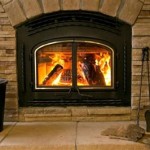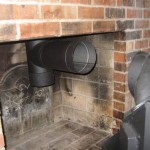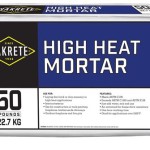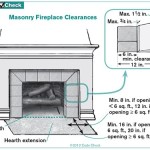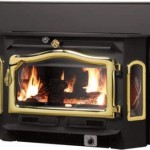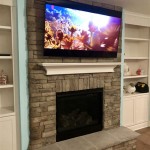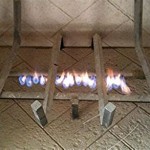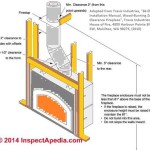Are Ventless Gas Fireplaces Dangerous? Examining the Risks and Safety Considerations
Ventless gas fireplaces, also known as vent-free gas fireplaces, offer an appealing alternative to traditional wood-burning fireplaces or vented gas fireplaces. They promise ease of installation, energy efficiency, and the aesthetic appeal of a flickering flame without the need for a chimney or venting system. However, this convenience comes with questions about their safety. The question of whether ventless gas fireplaces are dangerous is complex and requires a thorough understanding of their operation, potential risks, and safety precautions.
Unlike vented gas fireplaces that exhaust combustion byproducts outside the home through a chimney or vent, ventless models release these byproducts directly into the living space. This fundamental difference is the source of most concerns regarding their safety. The primary combustion byproducts of concern are carbon monoxide (CO), nitrogen dioxide (NO2), and water vapor. While manufacturers claim ventless fireplaces operate efficiently, minimizing byproduct production, the potential for these gases to accumulate in the home raises valid safety concerns.
The following sections will delve into the key aspects related to the safety of ventless gas fireplaces, examining the potential dangers and exploring the factors that contribute to or mitigate those risks.
Carbon Monoxide Poisoning: A Silent Threat
Carbon monoxide (CO) is an odorless, colorless, and tasteless gas. It is produced by the incomplete combustion of fuels, including natural gas and propane, which are commonly used in ventless gas fireplaces. When CO is inhaled, it prevents the blood from carrying oxygen to vital organs, including the brain and heart. This can lead to a range of symptoms, from mild headaches and dizziness to severe neurological damage, coma, and even death.
The primary concern with ventless gas fireplaces is their potential to elevate CO levels in the home. Although modern units are designed with oxygen depletion sensors (ODS), which are supposed to shut off the fireplace if CO levels become dangerously high due to insufficient oxygen, these sensors can fail or be improperly maintained. Moreover, even properly functioning ODS systems may not prevent the accumulation of CO to levels that pose a health risk, especially for vulnerable populations such as infants, the elderly, and individuals with pre-existing respiratory or cardiovascular conditions.
The severity of CO poisoning depends on the concentration of CO in the air and the duration of exposure. Prolonged exposure to even low levels of CO can cause chronic health problems. Because CO is undetectable without specialized equipment, it is often referred to as a "silent killer." The risk is amplified in poorly ventilated homes, where CO can accumulate more rapidly and reach dangerous concentrations. Furthermore, the use of other fuel-burning appliances, such as furnaces or water heaters, can exacerbate the problem by contributing to overall CO levels in the home.
To mitigate the risk of CO poisoning, it is crucial to install and maintain working carbon monoxide detectors throughout the home, particularly near sleeping areas and on each level of the dwelling. Regular testing and battery replacement are essential for ensuring the detectors function properly. It is also important to have the ventless gas fireplace professionally inspected and serviced annually to ensure proper operation of the ODS system and burner components. Vigilance and proactive safety measures are paramount for preventing CO poisoning from ventless gas fireplaces.
Nitrogen Dioxide and Respiratory Issues
Nitrogen dioxide (NO2) is another byproduct of gas combustion that is released into the home by ventless gas fireplaces. NO2 is a respiratory irritant that can cause inflammation of the airways and exacerbate existing respiratory conditions such as asthma and bronchitis. Exposure to elevated levels of NO2 can trigger coughing, wheezing, and shortness of breath.
Individuals with pre-existing respiratory illnesses are particularly susceptible to the harmful effects of NO2. Even short-term exposure can lead to acute respiratory distress and require medical intervention. Long-term exposure to elevated levels of NO2 can contribute to the development of chronic respiratory problems and increase the risk of respiratory infections.
The concentration of NO2 in the home is influenced by several factors, including the size of the room, the ventilation rate, and the burning rate of the fireplace. Smaller rooms with poor ventilation are more likely to experience higher NO2 concentrations. The continuous operation of the fireplace for extended periods can also contribute to the accumulation of NO2 in the air.
To minimize the risk of respiratory problems associated with NO2 exposure, it is crucial to ensure adequate ventilation in the room where the ventless gas fireplace is installed. Opening windows or using exhaust fans can help to dilute the concentration of NO2 and prevent it from reaching harmful levels. It is also advisable to limit the use of the fireplace, particularly in homes with individuals who are vulnerable to respiratory irritants. Regular air quality monitoring can help to detect elevated levels of NO2 and other pollutants, allowing for prompt corrective action.
Moisture and Indoor Air Quality
Ventless gas fireplaces release significant amounts of water vapor into the home as a byproduct of combustion. This increased humidity can create a favorable environment for mold growth, dust mites, and other allergens. Excessive moisture can also damage building materials, such as drywall, wood, and insulation, leading to costly repairs.
Mold growth is a common concern in homes with high humidity levels. Mold spores are ubiquitous in the environment, but they require moisture to thrive. When mold grows indoors, it can release allergens and irritants into the air, leading to respiratory problems, skin irritation, and other health issues. Individuals with allergies, asthma, or other respiratory conditions are particularly sensitive to mold exposure.
Dust mites are microscopic creatures that thrive in humid environments and feed on dead skin cells. They are a common allergen and can trigger allergic reactions such as sneezing, runny nose, and itchy eyes. High humidity levels also promote the growth of bacteria and other microorganisms, which can contribute to poor indoor air quality and increase the risk of infections.
The amount of moisture released by a ventless gas fireplace depends on the size of the unit, the burning rate, and the duration of operation. Larger fireplaces and longer burning times will generate more water vapor. In poorly ventilated homes, the humidity can quickly reach levels that promote mold growth and other problems.
To control moisture levels and prevent indoor air quality problems, it is essential to ensure adequate ventilation in the home. Using exhaust fans in bathrooms and kitchens can help to remove excess moisture generated by cooking and showering. Dehumidifiers can also be used to reduce humidity levels, particularly in damp basements or crawl spaces. Regular cleaning and maintenance can help to prevent mold growth and dust mite infestations. Vigilant monitoring of humidity levels and prompt action to address any moisture problems are essential for maintaining a healthy indoor environment when using ventless gas fireplaces.
It is also important to adhere strictly to the manufacturer's instructions regarding the size of the room in which the ventless gas fireplace is installed. Over sizing the fireplace for the room can lead to a rapid buildup of combustion byproducts and increase the risk of health problems. Regular professional inspections are also recommended to ensure the fireplace is operating efficiently and safely.
Ultimately, the decision to use a ventless gas fireplace requires careful consideration of the potential risks and benefits. By understanding the hazards associated with carbon monoxide, nitrogen dioxide, and moisture, and by implementing appropriate safety measures, homeowners can minimize the risks and enjoy the comfort and convenience of a ventless gas fireplace while protecting their health and well-being.

Are Vent Free Gas Fireplaces Safe Ventless
.aspx?strip=all)
Ventless Fireplaces Explained Safety Of Vent Free Fires

Vented Vs Ventless Gas Fireplace Logs

Vent Free Fireplaces In Arizona Magic Touch Mechanical
:max_bytes(150000):strip_icc()/ventless-gas-fireplaces-4160746-hero-f9d4bdcd9bd446eb84406de306f790ba.jpg?strip=all)
How To Pick Out A Ventless Gas Fireplace

Vented Vs Ventless Gas Logs What S The Difference

What Is A Ventless Gas Fireplace Experts In Gaithersbutg Md

Are Vent Free Gas Fireplaces Dangerous

Ventless Gas Fireplace Propane

Ventless Gas Fireplace Is It Safe
Related Posts

